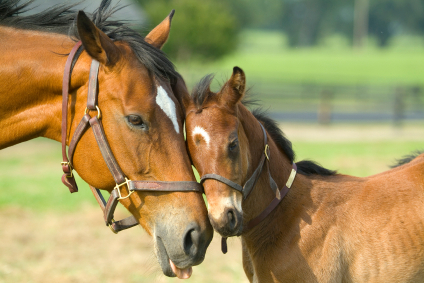The mare’s natural breeding season is divided into 4 phases corresponding to changes in day length:
Ovulatory Receptivity– Time period surrounding the summer solstice (June 21-22, longest day of the year) during which the mare is receptive to the breeding stallion and ovulating regularly. This is the peak period of fertility.
Autumn Transition/Anovulatory Receptivity– Time period surrounding the autumnal equinox (Sept 21-22) during which the mare is receptive to the stallion but not ovulating regularly.
Anestrus – Time period surrounding winter solstice (Dec 21-22, shortest day of the year) during which the mare is not cycling or receptive to the stallion.
Spring Transition/Anovulatory Receptivity– Time period surrounding the vernal equinox (March 21-22) during which the mare shows a long, erratic heat period that eventually culminates with ovulation.
Some breed organizations have rules surrounding recorded birth dates for foals that make it prudent to produce foals born as soon after January 1st as possible. The Jockey Club (Thoroughbred breed registry) mandates that any foal born in 2014 has a birthdate of January 1 for competition purposes. This means that a horse born in January will run in the same races as a horse born in June. The January born horse has a significant advantage over the younger, less developed horse born in June. It is for this reason that the operational breeding season starts in mid February and ends after the first week in July. In order to get mare’s pregnant during this time we must manipulate the reproductive cycle with hormones and other techniques to be described in future posts.



No responses yet